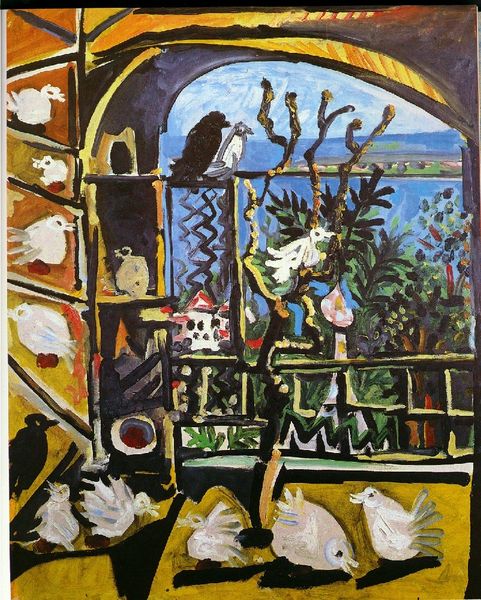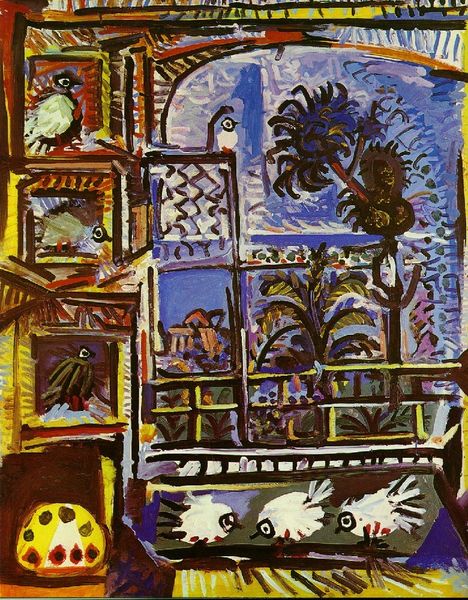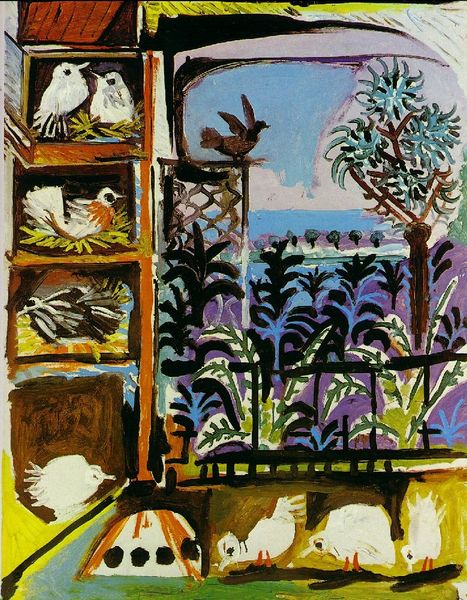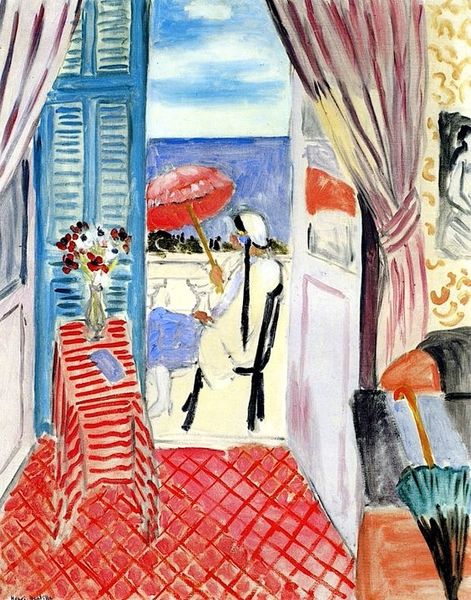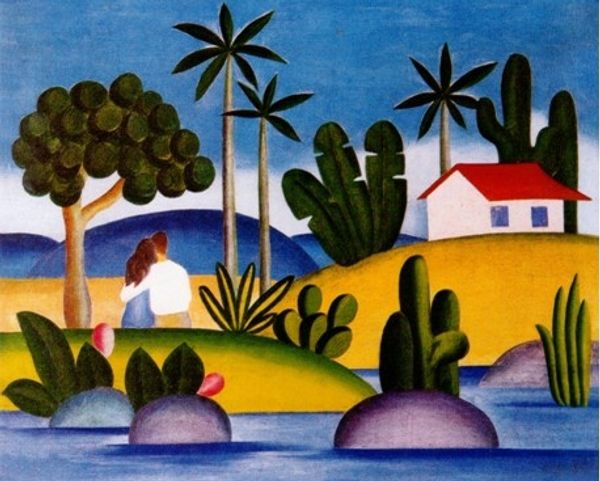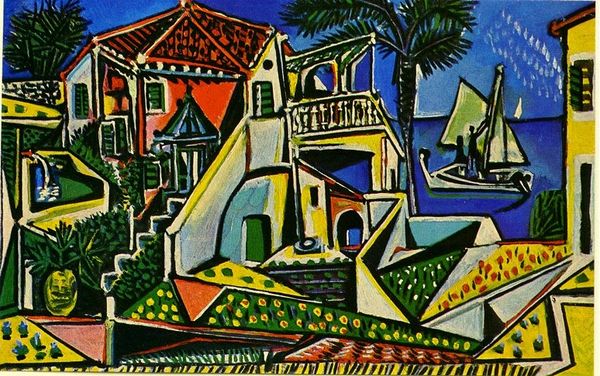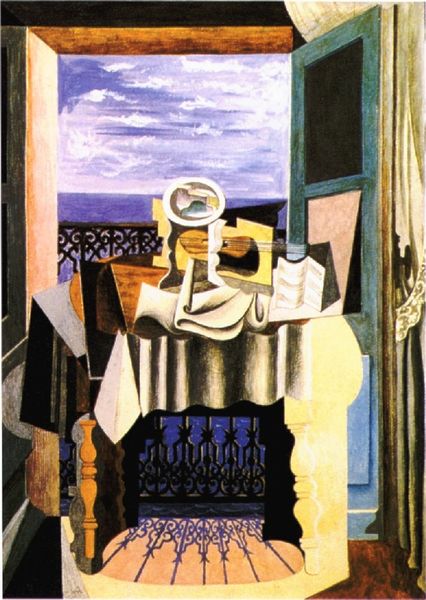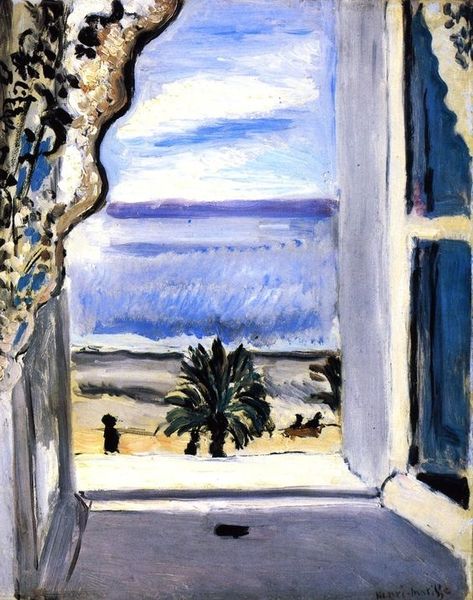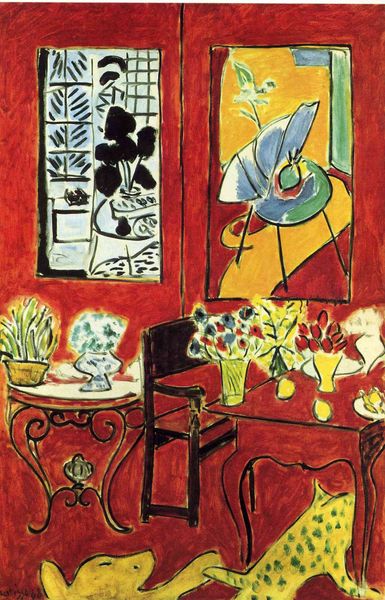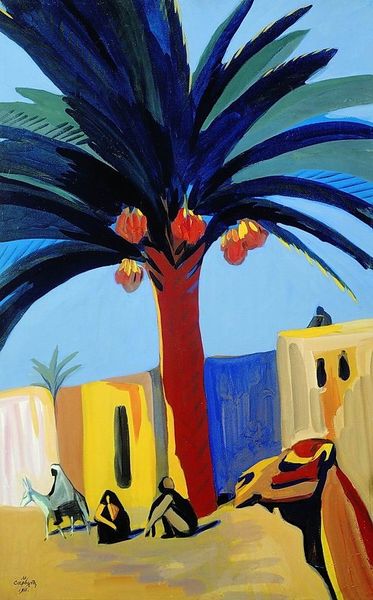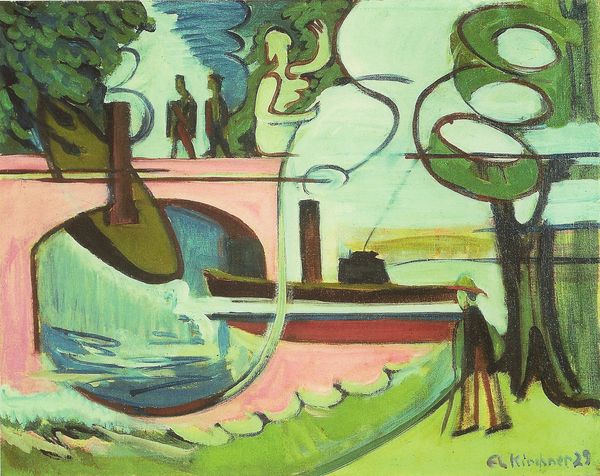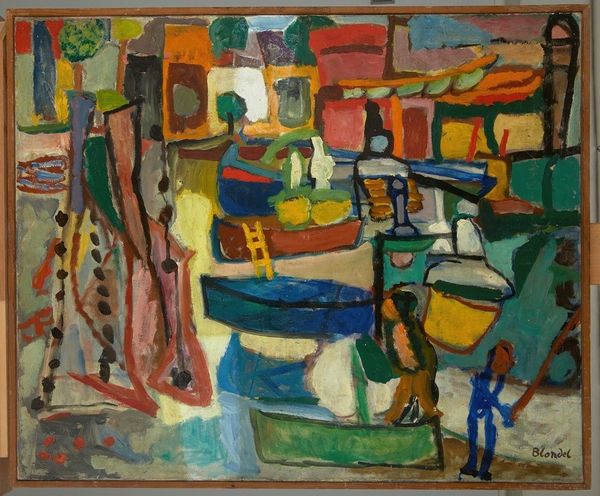
Copyright: Pablo Picasso,Fair Use
Editor: This is Picasso's "Studio (Pigeons) (Velazquez)," created in 1957 using oil paint. It feels like a vibrant window into another world, but also somewhat disjointed, almost like a dream. What catches your eye in this painting? Curator: The most striking aspect is how Picasso reinterprets Velázquez through a distinctly modern lens. Pigeons, recurring symbols for Picasso, often represented peace and freedom, yet within this cubist structure, they are confined within the studio space. Do you sense that confinement too? Editor: Definitely. It's like the window is offering freedom, but the rigid cubist shapes feel like a cage of sorts. I notice other shapes repeated as well. Is there any significance there? Curator: Indeed. Observe the interplay of geometric shapes, which allude to Cubism's fracturing of perspective. Each facet offers a different viewpoint, layering perception and memory. How does this fracturing influence your perception of the studio itself? Editor: It's like he’s showing us multiple viewpoints at once, inside and outside blend, so I struggle to get a fixed idea of the scene. Curator: Precisely. And consider how Picasso folds the tradition of still-life into the landscape genre. The interior—the pigeons, the potted plants—are treated with the same importance as the external view. Can you find cultural meanings in that collapsing boundary? Editor: Hmmm... I guess that everything he painted, no matter how different they were, became a part of his life... Curator: An astute observation. And how do the symbols then help create meaning across the work? Editor: This has certainly provided me with a lot to think about – the confinement, the layering, it changes everything! Curator: Yes, a world re-presented in pieces; through symbols Picasso seeks a cultural and personal wholeness that mirrors a subjective continuity.
Comments
No comments
Be the first to comment and join the conversation on the ultimate creative platform.
